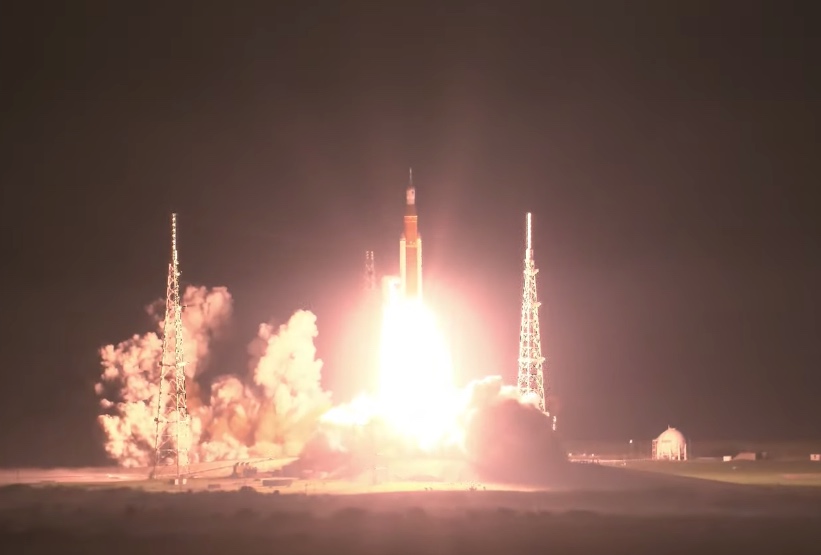NASA has successfully launched its next-generation SLS rocket and Orion spacecraft on a test flight to the moon, ushering in a new era of space exploration.
Packing 8.8 million pounds of thrust at launch, the world’s most powerful operational rocket blasted off from the Kennedy Space Center in Florida at 1:47 a.m. ET on Wednesday, November 16, on its first-ever flight.
We are going.
For the first time, the @NASA_SLS rocket and @NASA_Orion fly together. #Artemis I begins a new chapter in human lunar exploration. pic.twitter.com/vmC64Qgft9
— NASA (@NASA) November 16, 2022
The Artemis I mission involves the 98-meter-tall SLS rocket sending the uncrewed Orion capsule on a flyby of the moon that will take it within just 62 miles of its surface and 40,000 miles beyond its far side, further into space than any human-rated spacecraft has ever gone.
The test flight will end with Orion’s splashdown in the Pacific Ocean off the coast of California on December 11.
You can follow the spacecraft’s progress on NASA’s Artemis Real-time Orbit Website (AROW). The site shares data that lets you pinpoint the Orion’s precise location, as well as its distance from Earth and the moon.
“AROW visualizes data collected by sensors on Orion and sent to the Mission Control Center at NASA’s Johnson Space Center in Houston during its flight,” NASA said recently. “It will provide periodic real-time data beginning about one minute after liftoff through separation of the SLS rocket’s Interim Cryogenic Propulsion Stage approximately two hours into flight. Once Orion is flying on its own, AROW will provide constant real-time information.”
NASA officials will be relieved to see the SLS rocket finally head skyward following a number of recent launch delays caused by technical issues and extreme weather systems.
A successful Artemis I mission will pave the way for Artemis II, which will take the same route around the moon, but this time with astronauts riding on the Orion capsule.
Following that, the highly anticipated Artemis III mission will endeavor to put the first woman and first person of color on the lunar surface, in what will also be the first astronaut moon landing since the final Apollo mission in 1972.
Looking toward the 2030s and beyond, NASA and its international partners plan to build a permanent moon base on the lunar surface for long-term astronauts visits, with the outpost potentially acting as a stepping stone for the first crewed visit to Mars.
Editors’ Recommendations

